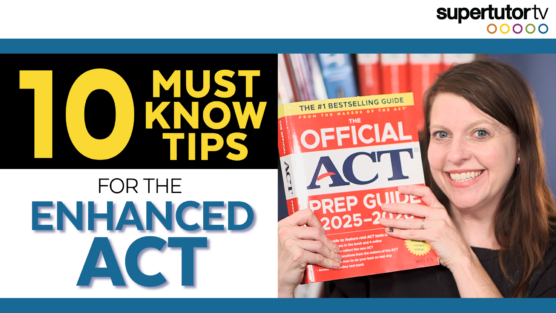Have you ever heard of tutors that have this method for approaching the SAT reading section where they don’t read the passage first and go straight to the questions? And maybe they never read the whole passage, but they go back and forth between the questions and the passage. In the video, Brooke is going to try that method. This is not her usual method, and she thinks it might be a little dangerous, but she can’t comment on it until she’s tried it out herself!
In the video, you can watch Brooke take a test and try out this method, but here, we’re going to focus on her thoughts and her analysis of this method (and why she doesn’t like it).
First, this method seemed to work a lot better on easier passages. So when she had social science and literature passages, this method was okay because she could read a little bit, find what she needed, and go back and forth that way. But this method really grilled Brooke for the science and history passages, because those are super difficult passages, and if you don’t understand the main idea of what they are saying, you can’t use that main idea to guide your answer choices. She also found that for the science passages, she could not figure out the main ideas for one of the passages, and therefore didn’t know where to go.
The other thing that Brooke struggled with is when she had to synthesize information. For example, when there was a question that talked about the graph and finding supporting information in the passage, Brooke had no background from the passage to answer it. So, for those kinds of synthesis questions where you’re pulling information from multiple places, not reading the whole passage really makes it difficult to answer them.
The other problem that Brooke encountered is that she ran out of time. Some of you might be thinking that if she’s running out of time when she’s not reading the passages, how is it going to save time to read them? But here’s the deal: when Brooke hasn’t read the passage at all and she’s going back to look for the information, she sometimes has to reread three times because she doesn’t understand the context. During the test, she was also not 100% sure if the portion that she was reading even had the answer that she needed, so there was a lot more anxiety involved in that aspect.
Another problem that Brooke faced was not knowing where key words would be. For example, in the first passage, there was a question where she didn’t know where one key word was, and because she hadn’t read the passage, she ended up skimming the whole passage twice to find it. We know there are some tutors that say earlier questions are more likely to be in the first half and later questions are more likely to be in the second half, but that might not always be the case, because Brooke didn’t know where to look for that information.
So when is this method potentially good? Like Brooke said before, she doesn’t think it’s as bad for the social science and literature passages. She can kind of see how if you’re really low on time, this method might be okay to use for the easier passages. The other thing that she noticed, especially on the literature and the first social science passage, is that she could get about 90% of the questions pretty easily with this method, but then she would get hung up on one or two because she didn’t know where to look. And those can eat up your time really quickly.
But if you’re the kind of person that’s maybe aiming for a 600 or a 650, or realistically, you’re not trying to get every single question right, you could use this method and maybe drop the questions that are super detailed where you know you’re not going to have time to do them.
In any case, Brooke found this method very anxiety-producing and found that she was going back and rereading things multiple times, which is why this method potentially wastes time. It was also hard for her to relax and do the test the way that she knew it was supposed to be done. That anxiety is really tough to deal with, especially when taking a test like this. The other thing is that when Brooke usually reads the passages, she works at a speed where she can have five minutes at the end, and with this particular strategy, she doesn’t have that time because she finds herself going back and reading sections that aren’t the sections she’s supposed to read and then going to look at other sections. But while she’s reading the section that she wasn’t supposed to read, she’s not mapping it or organizing it in any way, so it’s just wasted time.
So that’s Brooke’s basic review of this method: there’s not enough time to do this properly. Could this be a useful tool in your arsenal to mix it up if you’re running out of time? Yeah, maybe you could do it on one passage (Brooke definitely recommends a social science one because it’s the easiest to jump in and out of and might be a little more organized in terms of its structure), but as an overall strategy, if you’re aiming for the highest score possible, Brooke doesn’t think that this is a way to really maximize your ability.




